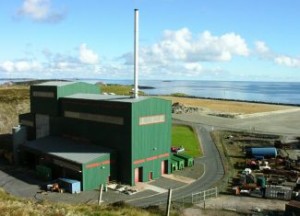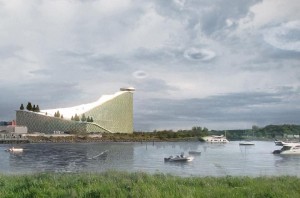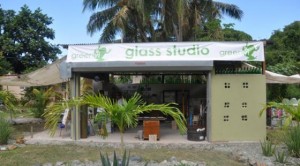Doubel Combustion Chamber
All Incinerators are Doubel Combustion Chamber with One Fuel Burner Each. After Burner Technology for Completely Combustion and Cleaner World.
Read MoreHigh Temperature Incineration
Temperature Range 800 Degree to 1200 Degree in Combustion Chamber. Temperature Thermocouple Monitor and Controller. High Quality Fire Brick and Refactory Cement.
Read MoreGet Lastest News
There are latest incinerator news like technical, public news, business tender for medical waste incinerator,animal incineration, pet cremation
Read MoreNanjing Clover Medical Technology Co.,Ltd.
Email: sales@clover-incinerator.com | Tel: +86-25-8461 0201
Regular model incinerator for market with burning rate from 10kgs to 500kgs per hour and we always proposal customer send us their require details, like waste material, local site fuel and power supply, incinerator operation time, etc, so we can proposal right model or custom made with different structure or dimensions.
Incinerator Model YD-100 is a middle scale incineration machine for many different usage: for a middle hospital sickbed below 500 units, for all small or big size family pets (like Alaskan Malamute Dog), for community Municipal Solid Waste Incineration, etc. The primary combustion chamber volume is 1200Liters (1.2m3) and use diesel oil or natural gas fuel burner original from Italy.
Latest Post
SIC opts for new mix of burning and recycling
SHETLAND Islands Council is to introduce “door-to-door” recycling of glass and cans next summer – but paper, card and plastic will be burned in the Gremista incinerator after that was found to be the “best practicable environmental option”.

While the notion of burning garbage may seem counterintuitive to those seeking to make the planet greener, the local authority’s stance is backed up – at least in the short term – by Zero Waste Scotland.
The waste-to-energy plant burns material from Shetland, Orkney and occasionally the Highlands, and its output then powers SHEAP’s district heating scheme for homes in Lerwick.
Because Shetland is not connected to the national grid, SHEAP has to make up any shortfall in energy using power generated by oil-fired plants. As a result, the council says, it is less environmentally damaging to incinerate material rather than recycle it.
In April 2013 the council abandoned kerbside collection of recycled material in Lerwick and Scalloway – leaving householders to take plastic, glass, newspapers and cans to collection points instead.
The latest recycling rethink is the upshot of two studies commissioned by Zero Waste Scotland, and will cost the local authority £40,000 more than it presently spends on collecting waste and recyclable materials.
Meanwhile, opening hours for the local authority’s Gremista waste management site are to be cut to allow staff to spend more time sorting industrial waste prior to incineration.
It is to switch to opening between 1pm and 6pm on weekdays and from 11am to 3pm at weekends. That is a significant reduction on the current opening hours of 8am-8pm from Monday to Friday and 9am-5pm on Saturdays and Sundays.
It is expected a charge will be levied on commercial and business premises – accounting for an estimated 20 per cent of waste – for recycling glass and cans.
Infrastructure director Maggie Sandison said changes in legislation left the SIC with no option but to change tack. The situation remains in flux, with further legislative changes expected, and she suspects that in the long term the council will be “recycling more and incinerating less”.
Collecting glass and cans “at least” once a month from every islands household will raise the local authority’s overall recycling rate to around 12 per cent, compared to six per cent at present.
SIC infrastructure director Maggie Sandison. SIC infrastructure director Maggie Sandison. Shetland will continue to recycle the lowest percentage of material anywhere in Scotland, trailing far behind the SNP Government’s target of recycling 70 per cent of waste by 2025.
But Sandison’s report pointed out that Zero Waste Scotland recognised that –until an alternative heat source to the energy recovery plant is found – “environmental benefits of waste incineration to heat the district heating scheme outweigh the environmental benefits of recycling combustible materials in Shetland”.
A special derogation from environmental regulator SEPA will be required to allow the energy recovery plant to continue burning hard plastics.
She told members of the environment and transport committee on Monday that the plan was to begin the new recycling collection next summer.
Door-to-door collections will help sort municipal waste, but more staff resources will be required to ensure industrial waste is properly sifted through prior to incineration.
“It will require different staffing,” she told environment and transport committee members. “We’re looking to change the opening hours of the waste management facility in order to redeploy staff to sorting waste rather than just accepting it through the gates.”
Sandison said staff would spend the remainder of 2014 looking at the best way to collect recycling, with an eye to Orkney where a similar door-to-door service was recently rolled out.
While “bring sites” for recycling will no longer be used by the council, Sandison said talks were being held about putting in place more textile banks for the Salvation Army “and they can choose what ones they want to use”.
The committee backed the report’s recommendations without objection on Monday, a move welcomed by chairman Michael Stout.
“There are many, many threads to this,” he said, “and I think from my perspective this gives us the best way out of the particular set of circumstances that we find ourselves in.”
Councillor Steven Coutts said he felt there was an opportunity for the council to be “proactive” in encouraging folk to minimise the amount of waste they generate, meaning there would be less material to recycle or burn in the first place.
Sandison agreed, saying the council should also promote reuse, while government regulations should reduce the extent to which things like fruit and vegetables are “wrapped in vast amounts of plastic”.
“We’ll see less and less [waste] when charges incurred in the manufacture of waste start to make that unattractive,” she said. “There are going to be big changes in waste generation as well as recycling as legislation proceeds.”
All-in-one waste incinerator/ski slope/power station to be built near Copenhagen
When their central waste incinerator packed up, five municipalities in Denmark were left with two options. They could invest in another incinerator. Or, they could do something completely different.
In true Danish style, the group of authorities near Copenhagen chose option B, and commissioned New York architecture firm BIG to design something new. The 80m tall structure will burn 400,000 tonnes of waste a year; it’ll also generate enough electricity for 50,000 houses, and enough heat for 120,000.
Best of all, the Amager Bakke plant, as it’ll be called, will also put its 41,000 square metres of roof to good use. It’ll double as a small mountain, complete with trees, hiking trails and 500m-worth of ski slope coated with synthetic snow.

Skiers gambol atop the giant furnace.
Keen to prevent visitors becoming too complacent or joyful, however, the architects have built in what they call a “gentle reminder of the impact of consumption”: the power plant’s main stack will emit a single smoke ring whenever a tonne of carbon dioxide is produced. We assume this rendering of the building in the throes of what appears to be a nuclear winter is meant to serve the same purpose.

The building, around 5km from Copenhagen, is currently under construction and should be completed by 2017. Now, they just need to come up with a clever portmanteau to describe the new structure. “Skincinerator” doesn’t quite cut it.
Waste Management Problems in the Caribbean: How Green VI Targets these Issues
Waste Management is a critical issue that needs to be urgently addressed in the British Virgin Islands (BVI) to ensure the protection of residents and visitors alike, and to preserve the beautiful and diverse natural environment found here.
Green VI, a local not-for-profit organization, is working towards a greener, cleaner, and healthier BVI. Their projects focus around the themes of waste, energy, water and education.
Green VI has initiated the following projects around the waste theme namely:
• A glass studio as a demonstration project to prove that waste can become a resource
• Working with partners to initiate a voluntary plastic bag ban
• Working with the BVI government and local recyclers to create a viable recycling system
• Establish pilot composting projects
• A trash to treasure program for schools
• Continuous education and awareness
Glass Studio
Glass waste is problematic in the BVI; it is estimated that 3.8 million bottles were imported into Tortola in 1996, resulting in the 1700 tons of glass received at the incinerator. Each year, the incinerator is shut down for approximately twenty days during which time the Department of Waste Staff manually chip off glass which has melted onto the incinerator walls. For the duration of time that the incinerator is shut down, incoming waste is stored or burned, resulting in further health hazards such as toxic smoke, flies, and vermin.
Although not designed to deal with all of Tortola’s glass waste, Green VI’s Glass Studio demonstrates the usefulness of old bottles. Between 200 – 400lb of glass waste collected at the restaurants in Cane Garden Bay, is melted each week in the furnace. Green VI’s team of glassblowers turns the melted glass into decorative bowls, glasses, ornaments and souvenirs. Profits from the Glass Studio will go toward supporting other environmental initiatives in the BVI.
Currently, Green VI is working on converting part of their studio equipment to run off used vegetable oil, which not only reduces vegetable oil waste and operating costs, but also produces less greenhouse gas emissions. Green VI also turns crushed bottles into sea glass by tumbling it in a concrete mixer, which makes great landscaping material. All the packaging used at the studio is made from re-purposed packaging. Old t-shirts and boxes destined for the incinerator are used as packaging material.
In addition to demonstrating waste as a resource, Green VI’s Glass Studio is instrumental as an education and awareness tool. Local apprentices are being trained in the ancient art of glass blowing. The Studio has welcomed students from all the schools in the BVI to watch “trash to treasure” in action.
Ban the plastic shopping bag
Another major concern in the Territory is plastic waste; plastic bags make up the highest percentage of litter found in the BVI, they contribute to the blocking of drains and increasing the risk of flooding, and kill marine life through strangulation and ingestion. Plastics take 1000 years to photodegrade. They break down into smaller fragments which soak up toxins. These tiny particles of plastic do not have the ability to biodegrade and contaminate soil, water and living organisms forever.
This is why Worldhouse Caribbean and Green VI, in partnership with the major retailers in the BVI, felt it necessary to initiate a voluntary plastic bag ban in the BVI. Because all the major grocery stores in the territory have signed on to this proposal of their own accord, as opposed to the government enforcing the ban through legislation, the BVI is the first British Territory in the world to voluntarily ban the plastic bag.
Plastic bags, in the ocean, look a lot like jellyfish, which are a main food source to many marine animals. Plastic bags, once ingested, create blockages within the digestive system which eventually leads to death. Bringing a reusable bag with you when grocery shopping and avoiding the new 15 cent per bag charge decreases the amount of plastic bags being littered which, in turn, decreases the amount of plastic bags in the ocean.
Trash to Treasure
Green VI, in partnership with the BVI Tourist Board, the Conservation and Fisheries Department and the Youth Empowerment Project are facilitating a school trash to treasure program to encourage the youth to see and understand the value of the materials they have around them. Participants are encouraged to enter a trash to treasure contest and winner’s art will be displayed at the Earth Day Festival in Cane Garden Bay on the 20th April 2013.
Recycling
Waste management is such a pressing issue in the BVI for many reasons; one main reason being that islands face space constraints to landfill. Green VI is currently working with the Government of the BVI and local recyclers to implement a viable recycling system for the Territory. Pilot composting projects, in partnership with the USVI Recycling Partnership, are being implemented.
Education and Awareness
Alongside other organizations in the BVI, Green VI is working towards educating the public about sustainability issues including waste and materials management. Green VI was awarded UNESCO funding in 2012 and 35 participants were trained on what sustainability is and how it can be implemented in their own organizations and collectively move toward a greener, cleaner and healthier BVI.
Disputing statements concerning incinerator
The letter written by Matt Binder in West Hawaii Today Sept. 26 was a rant that should have been printed on the comic page. His effort at sounding the alarm was obviously to cause panic and therefore support his favorite council candidate.Ten years ago, the proposed incinerator project had a price tag of $120 million. Today, Binder places the price tag at $150 million. That is a matter of concern. The fact remains that we need to dispose of the trash generated on the east side of the island before the Hilo landfill reaches maximum capacity. That predictably will occur in a few years.Mr. Binder expresses concern that we will have to reduce recycling to meet the minimal trash requirement or pay huge fines. Recycling is great but not all recyclable materials can be recycled cost-efficiently so maybe it is not such a bad interim idea. He conjures the idea that dozens of trash hauling trucks will need to be added daily to haul the trash. The fact is, the trucks hauling trash are already on the road doing just that today. Only when we generate more trash will there be a need for more trucks to haul the additional trash.The conclusion Mr. Binder reaches as to the reason for his assumption is, as he puts it: campaign contributions. Then he reveals the secret: Mayor Billy Kenoi aspires to higher office. Oh how fortunate we are to have Mr. Binder reveal to us that the mayor has ambitions and if so, is that wrong? Is it his business?It is obvious that Mr. Binder does not support the incinerator concept in dealing with the east side trash. In stating his assumptions, he exaggerates the doomed outcome but never suggests a reasonable solution. It may be that he draws his conclusions from the hot atmosphere we have been experiencing of late or his desire to support his favorite candidate overrode his ability to comprehend the trash situation.
Getting a grip on our garbage
Nobody likes to be thought of as a garbage factory but — like it or not — that is what cities have always been and will continue to be, despite our sense of sophisticated entitlement. While only the most narrow-minded would dismiss the enormous cultural, social and economic contribution of the city to human development, there is a sobering reminder of the cost in the fact that we are also perceived as perpetual-motion refuse machines in the surrounding hinterlands to which we increasingly export our rubbish while importing their resources and young people.
In Vancouver, for example, just over 600,000 inhabitants generated 557,334 tonnes of waste last year. Sort that into commercial, demolition and residential waste and it turns out that the average citizen produces about half a tonne of garbage a year. Put another way — because fooling around with dimensional statistics is always fun — some amusing calculations for converting residential waste to volume that were developed in California show Vancouverites produce roughly enough garbage to bury Library Square to the depth of a 37 storey building, which is about four times higher than the present library. Our garbage tower would rank as the 22nd tallest building in the city. That’s just for 2013. Add another one, likely taller, each year.
Statistics Canada reports that between 2001 and 2006, population growth in the country’s 33 main metropolitan areas grew at a rate which was seven times that for small towns and rural areas. Most Canadians now live in just six of those metropolitan areas — 10 million of us in the regions surrounding Toronto, Montreal and Vancouver. And even though there have been dramatic improvements in recapturing both materials for recycling and for energy from the urban garbage stream, the actual volume is obviously going to continue to be a problem with which we must wrestle.
If we are living examples of American writer Mason Cooley’s aphorism that human society sustains itself by transforming nature into garbage, it behooves us all to stop thinking about garbage simply as something useless to throw away. Start thinking about it instead as a resource we can exploit for all kinds of added value. In fairness, municipal waste managers, particularly across the Metro Vancouver region but in many other cities, too, have been among the most progressive thinkers in this. They have launched campaigns urging us to reuse, recycle and repurpose while developing practical and pragmatic ways to extract genuine economic value from the garbage stream.
As a result, we have effective programs for diverting organic waste — from kitchen scraps to lawn cuttings into compost — which can be reinvested in the natural landscape. Across Canada, more than 60 facilities — including here — now recover methane gas from landfills. Not only is gas used to generate energy, the extraction process reduces greenhouse emissions from urban landfills equivalent to almost seven million tonnes of carbon dioxide a year. In Edmonton, a new plant converts municipal garbage to cleaner-burning biofuels to further reduce carbon footprints. Others mine discarded computer and electronic parts. And so on.
The success of these strategies has been remarkable. In Vancouver, for example, per capita waste generation has been trending downward with satisfying consistency since 2007. Overall, the diversion rate for municipal waste has improved from 37 per cent in 1994 to almost 60 per cent in 2014.














